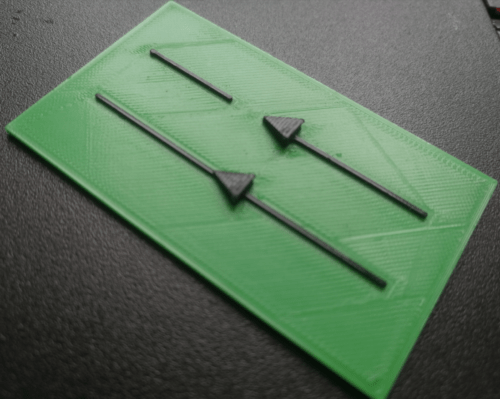The following suggestions are based on Guidelines and Standards for Tactile Graphics from BANA and other current standards.
Arrows can be used effectively to represent directions. The shape should simply be composed of the arrowhead and shaft. An open arrowhead should be symmetrical with two sides of the same length and with the same angle to the shaft (either 30° or 45°). A small distance between arrowhead and shaft can be helpful (~2.5mm).
If a solid triangle is used as the arrowhead, the triangle should be isosceles (two sides of equal length), with the angle between the two longer sides between 30º and 45º to best indicate direction. The shaft of the arrow should be attached to the arrowhead.
For the line thickness and extrusion height, follow the instructions in article 4.1.
Arrows should ideally be printed on vertical sides (see article 3.7).
Another option is to bevel the arrowhead slightly, but model it overall as a triangular surface. If you follow a line tactilely, you either bump into the back of the arrowhead or are lifted off the line. This also makes the orientation of the arrowhead clear. The print quality is good even with horizontal printing because the structure of the arrowhead is exalted and connected.
See below for an example of how this can work.




